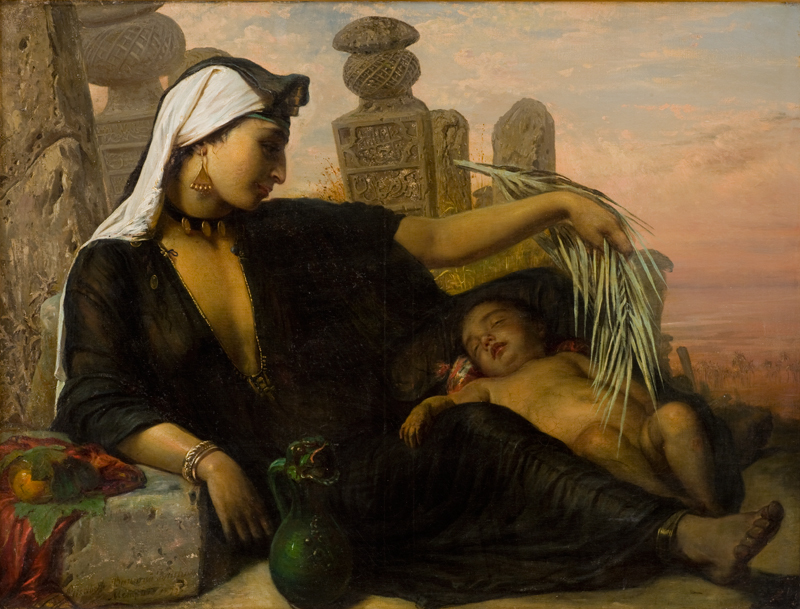Choosing a country's artworks for Europeana 280: Denmark

Ministries of culture together with museums and galleries all over Europe have been busy selecting their top artworks for the Europeana 280 collection. Over the next weeks we'll be discovering a little bit more about how and why particular images were selected and the stories behind some of the choices.
Here, Europeana 280's Exhibition Coordinator Ann Maher chats to Denmark, one of the first countries to finalise their nominations for the campaign. We’ll start sharing the nominated works from each country soon - so stay tuned!
The National Gallery of Denmark (SMK – Statens Museum for Kunst) is a passionate advocate of open access art. The obvious choice, therefore, when it came to coordinating the Danish selection for Europeana 280. How did they approach the task, and in terms of licensing, encourage other Danish collections to be as enlightened?
The Danish Ministry of Culture initially contacted the National Gallery to co-ordinate the Danish selection process. Merete Sanderhoff, curator of digital museum practice at SMK, is someone who is particularly well qualified for that role: “I know Europeana from the inside [she is a member of the Europeana Members Council and Management Board], I was very happy to do it!” Her work at SMK, enabling digitised art collections to become more relevant – and more fun - in new ways, is closely aligned to Europeana’s vision of transforming our lives through culture.
Making a choice: the Danish brief
“We spent some time thinking about the best approach to choosing a selection,” explains Merete. “This took place with museums and collections all over Denmark. There are unmissable artists but we also saw this as a huge chance for smaller collections to highlight their work and a wonderful opportunity to open up licenses with the benefits of exposure through the Europeana 280 campaign and visibility on the Europeana platform. That was a real incentive”. Were her colleagues in the Danish museum world as enthusiastic as she is about these opportunities? “Absolutely!”
The brief for the Danish institutions was that an artwork should be in permanent ownership of a Danish museum, but it didn’t necessarily have to be created by a Danish born and bred artist. “In our selection, we wanted to challenge the traditional idea of a ‘Danish’ artistic heritage. So while we included a range of obvious highlights from Danish art history, we also agreed to emphasize diversity and give more focus to art and artists that are less exposed or tend to get swallowed up in big collections. Moreover, we made an effort to include works by female artists who are often overlooked when the canonical story of art is told. Finally, we decided that no more than one picture from an individual artist could be selected, to ensure a broad selection.”
The proposals cover many periods of Danish art history from artists travelling far and wide from the 16th century onwards. Examples of Danish Golden Age art were selected alongside examples of social realism and impressionism with etchings, portraits and landscapes from different periods.

Artist Elisabeth Jerichau-Baumann (1819-1881) was a painter married to the sculptor Jens Baumann Adolf Jerichau. A tender portrait of her husband is included in the Danish selection, but her other subjects (and her taste for the exotic - she travelled widely in the Orient), were unusual for Danish painters of the times. Image: An Egyptian Fellah Woman with her Baby (1872), Elisabeth Jerichau-Baumann, SMK, CC0.
Painterly partnerships
There are also some intriguing examples of painterly partnerships. At the Skagen colony in Jutland, the artists Anna and Michael Ancher and Marie and P. S. Krøyer were among those who worked there from the 1870s onwards, inspired by naturalism and plein-air painting.
As well as painting fishermen and scenes of working life, they painted insightful portraits of each other. The Skagen Kunstmuseer selected a painting by Krøyer for the Europeana 280 collection. “There are a lot of stories behind the painting and how it wound up here in Skagen, so it made most sense to us,” explains the museum’s communications officer, Jakob Stig Nielsen. “Krøyer was a true European in a lot of respects, and spent a lot of time not only traveling around the Continent, learning his trade in Copenhagen and Paris, painting people and sights in places like France, Spain and Italy, but also visiting museums and collection in the major European cities to copy the works of Dutch or Spanish masters. He was very influenced by the contemporary tendencies in European art and in particular the French plein-air movement”.
Exploring that sense of European connectedness is one of the most rewarding prospects of the Europeana 280 campaign. But what are our colleagues at the Danish institutions looking forward to?
For Jakob Stig Nielsen, it’s the scope of the campaign: “Ten carefully selected works from each of the different European countries is bound to result in something exciting and spectacular.” And Merete? “What I love about the campaign and what I’m looking forward to in the collection is the opportunity to see a broader diversity and see the connections between European artists and movements. I really hope to be surprised in by new artists and art I didn’t know about.”
If you have any questions about the Europeana 280 campaign, please don't hesitate to get in touch with us at europeana280@europeana.eu.
